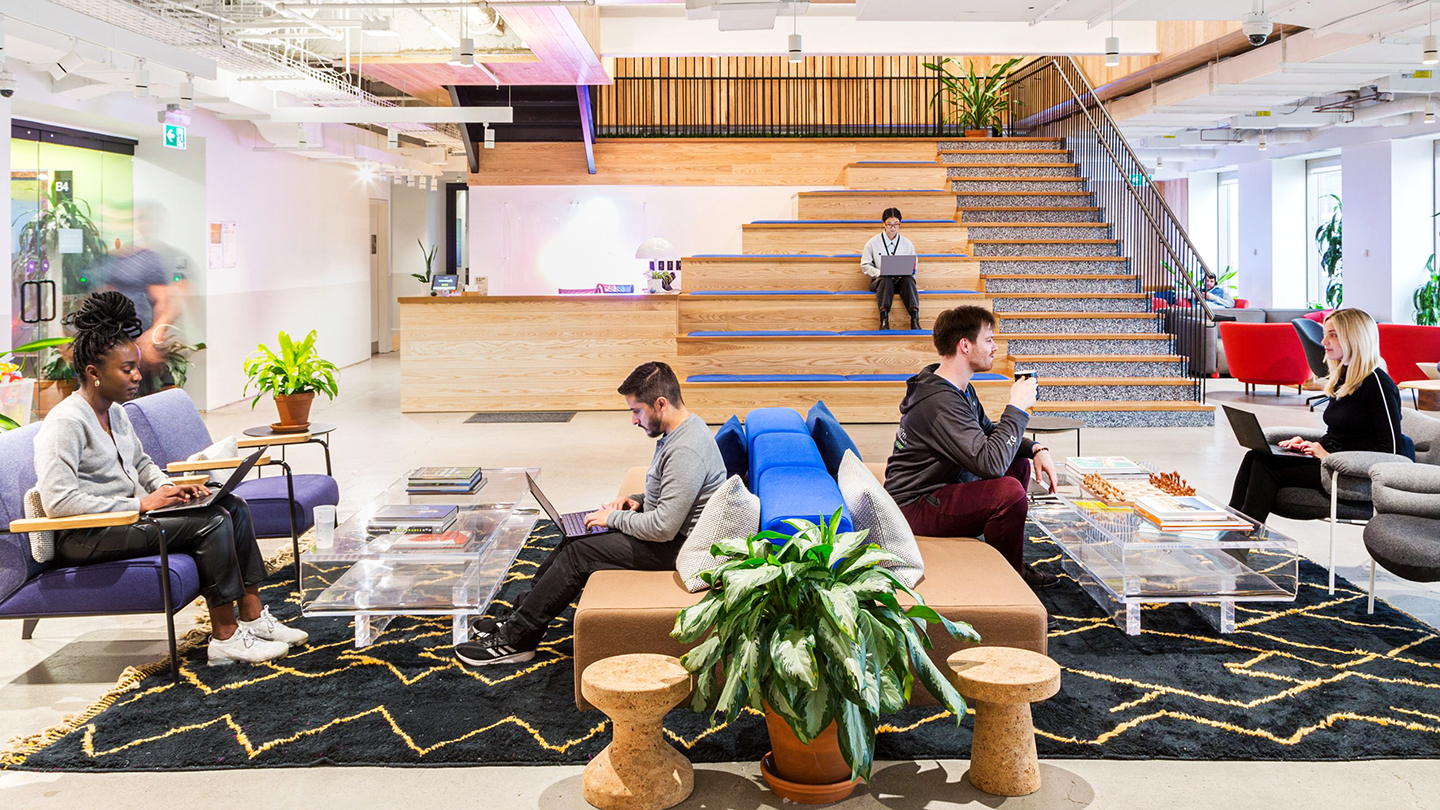
Good team collaboration is one of those hard-to-define things that you only really notice when it’s no longer there. When teams struggle to collaborate effectively, misunderstandings and mistakes start to creep in. Employees can become frustrated by working in isolation. Miscommunication can lead to more slip-ups, fewer new ideas, and lower productivity.
So how do you build great team collaboration in your company? Recent advances in team collaboration software and online meeting tools have helped to bridge the gap in the era of hybrid working. But it can often take more than just clever software to enable great team collaboration.
What does team collaboration mean?
Team collaboration is a term used to describe the act of working together as a group to complete a task or project.
In the context of business and management, team collaboration can be used to describe all of the parts of a project that involve any kind of employee interaction. That includes everything from brainstorming sessions and giving feedback, to reviews, planning meetings, and even hanging out at social events.
Why is team collaboration important?
When people work as a team, more gets done. Team collaboration is important for organizations because it allows individuals to pool together their talents, resources, and ideas to achieve a common goal more easily.
By enabling effective collaboration, leaders can get better results and higher productivity from their teams. But a high degree of team collaboration also has benefits beyond an uptick in performance.
- Better problem-solving. The ability to bounce ideas off other colleagues in a constructive and informal way allows people to refine their solutions as they go. When there are no opportunities to work together to solve a problem, employees might be effectively searching for solutions in the dark.
- Individual development. When people collaborate, they also learn from one another. Junior employees can benefit from passive and active mentorship from their more experienced colleagues. When cross-team collaboration happens, invaluable insight into other department disciplines can be shared.
- A sense of belonging. Working in isolation can leave workers feeling disconnected from their colleagues as well as the wider company mission. Collaboration serves as a vital lifeline between an employee and the rest of the business, which helps to boost morale while cementing everyone’s place on the team.
- Greater task division. As the old adage goes: A problem shared is a problem halved. Good team collaboration allows groups to divide tasks between members and assign work to the people best suited to it. Managers who can delegate effectively are better equipped to lead teams to success.
Types of team collaboration
There are two main types of team collaboration—synchronous and asynchronous—which differ from one another primarily in how communication happens.
- Synchronous collaboration takes place in real-time and tends to relate to more active forms of communication, such as instant messaging, face-to-face meetings, and virtual calls.
- Asynchronous collaboration happens at different times of the day and night, according to each employee’s working hours. It tends to involve delayed or relayed forms of communication, like email, and relies more on collaboration software, such as Asana, Monday, or Trello.
Neither type of team collaboration style is best, though most teams will find that they can work more effectively if they lean into a collaboration style that complements where they physically do their work.
- Virtual (or remote). Working remotely can put pressure on how teams collaborate. Because employees are more likely to work different hours and in different physical workspaces, teamwork naturally becomes more asynchronous. That means there’s a greater emphasis on collaboration tools and modes of communication that don’t operate in real-time.
- In the workplace. When working in a shared office or hybrid workspace, teams are better able to collaborate in a synchronized manner. That could be something as simple as walking over to a coworker’s desk to ask a quick question or scheduling a breakout session in a common area of the workspace where teams can share ideas and brainstorm face-to-face.
Tips to improve team collaboration
How well teams collaborate can be determined by a range of factors.These include the makeup of the team, the personalities of each member and their particular skill sets, the scale of the project, and the environment they’re working in.
There’s also somewhat of an X factor when it comes to sparking truly great teamwork. By keeping these variables in mind, leaders are well positioned to build more effective teams. There are other things you can do to encourage better teamwork too. Here are six tips to improve team collaboration in the workplace:
- Choose a good leader. A great leader can inspire a team toward success. They can also bolster team collaboration by encouraging members to respect one another’s ideas and opinions. This will help to create an atmosphere of trust and mutual respect.
- Set clear goals. Team members will find it much easier to collaborate when they can work toward an achievable and well-defined target. Vague or unrealistic goals can have the opposite effect, sapping enthusiasm for a project and undermining teamwork.
- Identify problems. Encourage team members to communicate regularly to spot problems before they arise. Recognizing upcoming challenges and collectively deciding on a shared solution will help to ensure that everyone is on the same page and that no one feels left out or left behind.
- Offer rewards. To help reinforce collaboration, teams that work together to achieve a common goal can be rewarded as a group rather than as individuals. You might celebrate the success of a project with a shared group activity that recognizes everyone’s contributions.
- Encourage learning. Ask team members to share their ideas openly and honestly, and encourage constructive feedback wherever it’s appropriate. This will help the team to generate new ideas and provide mentorship for the less experienced members of the group.
- Organize out-of-work activities. Encourage team members to celebrate their successes together outside of the work environment, whether that means planned events or more spontaneous after-work socializing. This helps to build a valuable sense of team spirit and camaraderie, which carries over into improved collaboration in the office.
How WeWork can help improve team collaboration
Teams can collaborate more effectively when they have flexible workspaces that meet their needs. Whether your teams work remotely or in the same shared space, you should have an office that works for your organization. WeWork designs workplace solutions with flexibility in mind, creating customizable hubs that can boost team collaboration.
For even greater flexibility when you need it most, WeWork All Access and WeWork On Demand lets you and your teams access stylish workspaces and meeting rooms in hundreds of locations across multiple cities, allowing people to do their best work wherever they are.
Steve Hogarty is a writer and journalist based in London. He is the travel editor of City AM newspaper and the deputy editor of City AM Magazine, where his work focuses on technology, travel, and entertainment.
Rethinking your workspace?










